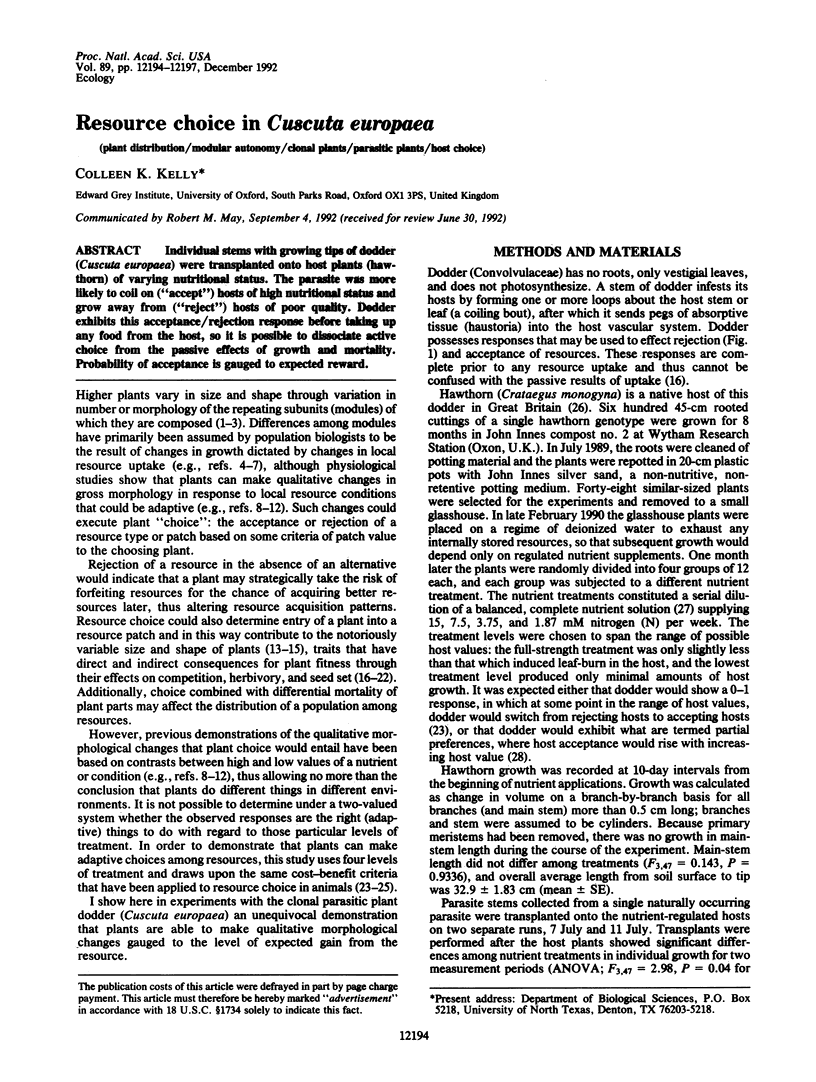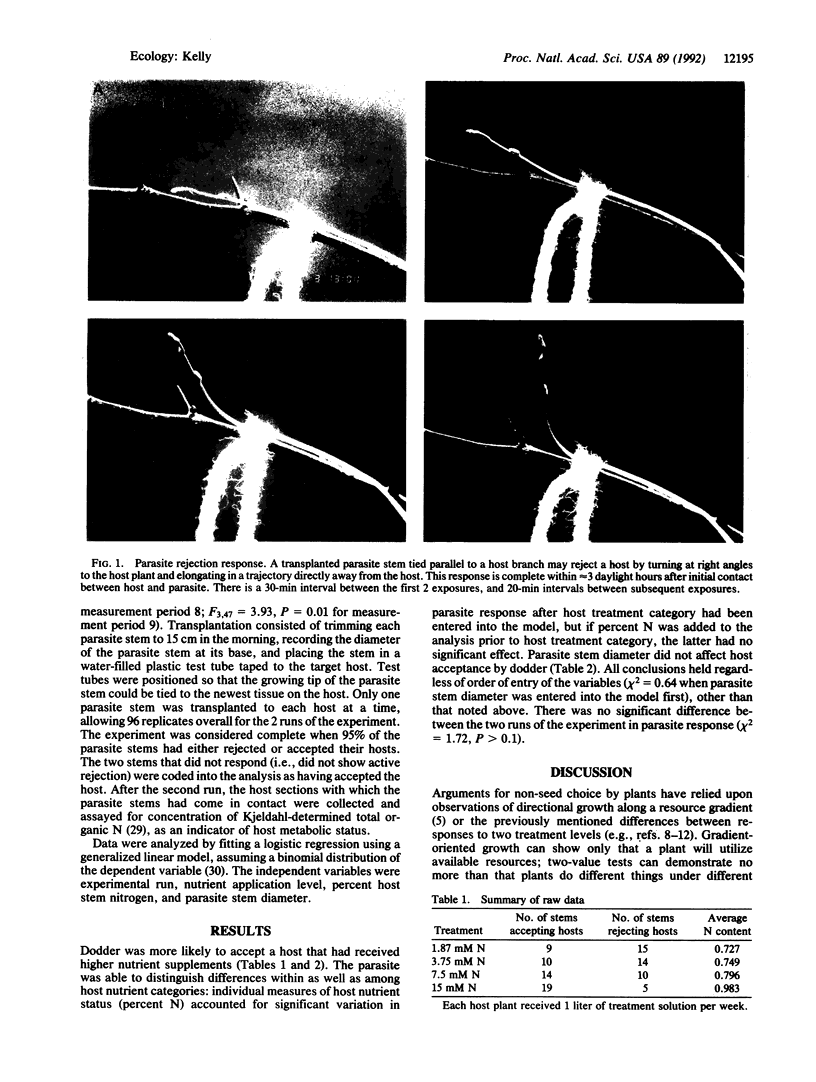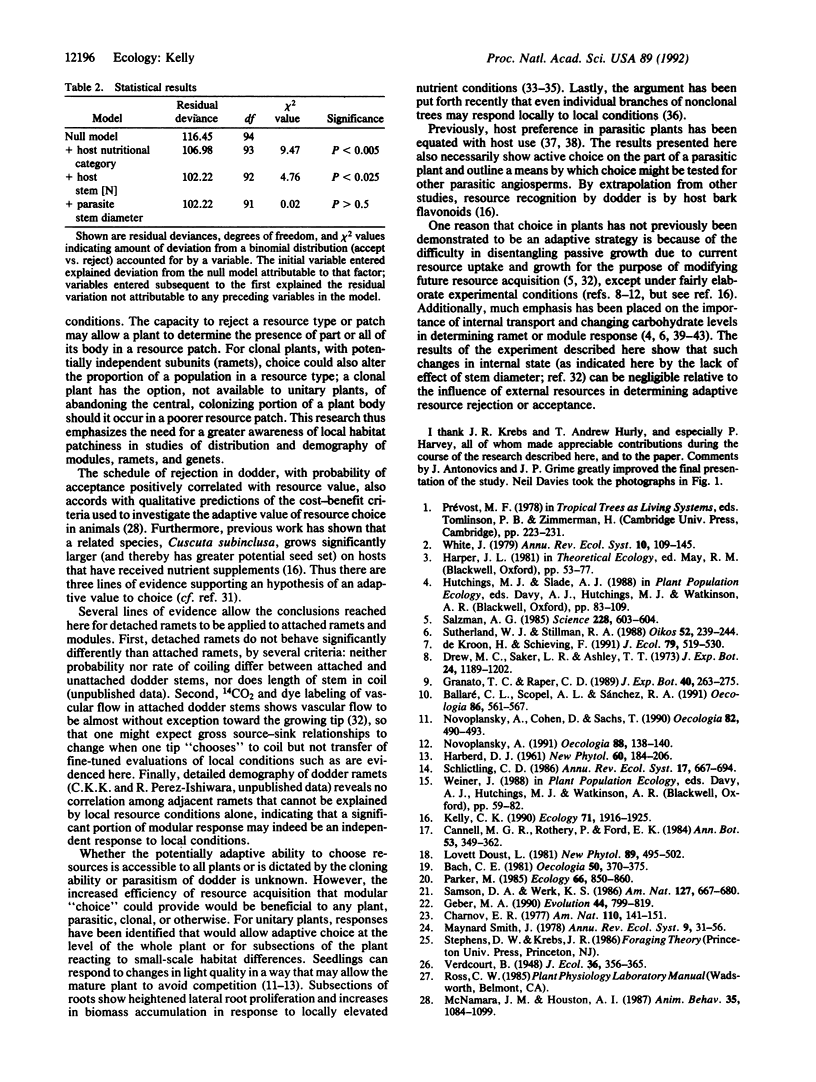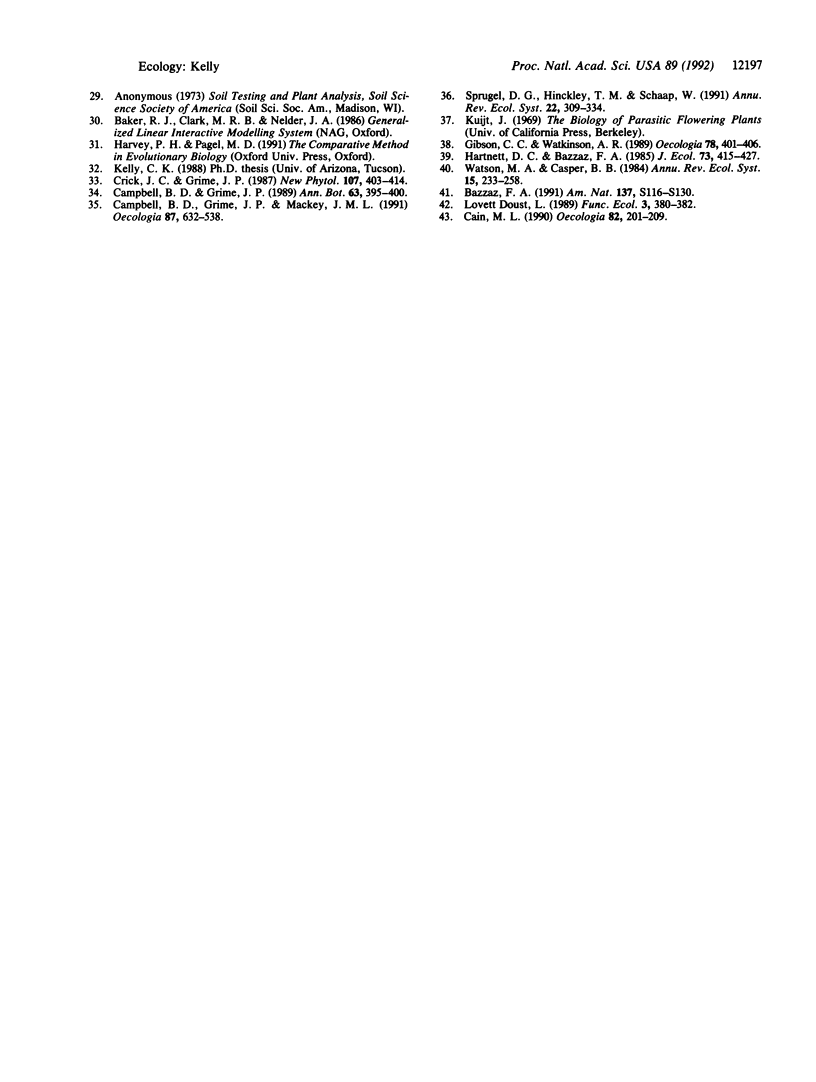Abstract
Individual stems with growing tips of dodder (Cuscuta europaea) were transplanted onto host plants (hawthorn) of varying nutritional status. The parasite was more likely to coil on ("accept") hosts of high nutritional status and grow away from ("reject") hosts of poor quality. Dodder exhibits this acceptance/rejection response before taking up any food from the host, so it is possible to dissociate active choice from the passive effects of growth and mortality. Probability of acceptance is gauged to expected reward.
Full text
PDF



Images in this article
Selected References
These references are in PubMed. This may not be the complete list of references from this article.
- Granato T. C., Raper C. D., Jr Proliferation of maize (Zea mays L.) roots in response to localized supply of nitrate. J Exp Bot. 1989 Feb;40(211):263–275. doi: 10.1093/jxb/40.2.263. [DOI] [PubMed] [Google Scholar]
- Salzman A. G. Habitat selection in a clonal plant. Science. 1985 May 3;228(4699):603–604. doi: 10.1126/science.3983647. [DOI] [PubMed] [Google Scholar]



